Related Research Articles

4769 Castalia is a near-Earth object and potentially hazardous asteroid of the Apollo group, approximately 1.4 kilometers in diameter and was the first asteroid to be modeled by radar imaging. It was discovered on 9 August 1989, by American astronomer Eleanor Helin (Caltech) on photographic plates taken at Palomar Observatory in California. It is named after Castalia, a nymph in Greek mythology. It is also a Mars- and Venus-crosser asteroid.
Comet Elst–Pizarro is a body that displays characteristics of both asteroids and comets, and is the prototype of active asteroids. Its orbit keeps it within the asteroid belt, yet it displayed a dust tail like a comet while near perihelion in 1996, 2001, and 2007.

199 Byblis is a medium-sized main belt asteroid.

366 Vincentina is a fairly large main belt asteroid.
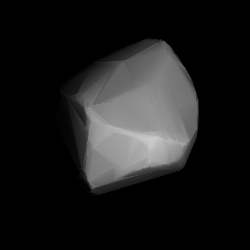
237 Coelestina is a typical main belt asteroid.

260 Huberta is a large asteroid orbiting near the outer edge of the Main belt. It is dark and rich in carbon.

263 Dresda is a typical Main belt asteroid. It belongs to the Koronis family of asteroids.

267 Tirza is a fairly sizeable, very dark Main belt asteroid.
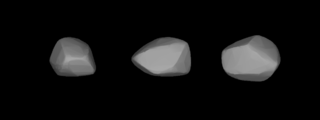
312 Pierretta is a 46 km main-belt asteroid discovered on 28 Aug 1891 by Auguste Charlois at Nice.

343 Ostara is a background asteroid from the inner region of the asteroid belt. It was discovered by German astronomer Max Wolf at the Heidelberg Observatory on 15 November 1892.
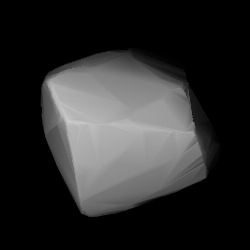
361 Bononia is a very large, resonant Hilda asteroid located in the outermost region of the asteroid belt. It is classified as a D-type asteroid and is probably composed of organic rich silicates, carbon and anhydrous silicates. It was discovered by Auguste Charlois on 11 March 1893, in Nice, and assigned the prov. designations A893 EF and 1893 P.
443 Photographica is a typical Main belt asteroid. It is classified as an S-type asteroid.

534 Nassovia is a minor planet orbiting the Sun. It is a member of the Koronis family of asteroids.
625 Xenia is a minor planet orbiting the Sun. It was discovered by August Kopff in Heidelberg, Germany, on 11 February 1907. The name may have been inspired by the asteroid's provisional designation 1907 XN.
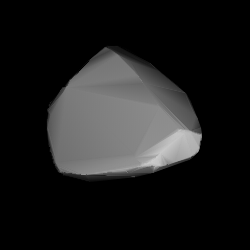
662 Newtonia is a minor planet, specifically an asteroid orbiting mostly in the asteroid belt.
668 Dora is an asteroid orbiting in the asteroid belt located roughly between the orbits of the planets Mars and Jupiter. The name may have been inspired by the asteroid's provisional designation 1908 DO.
768 Struveana is a minor planet orbiting the Sun. The asteroid was named jointly in honor of Baltic German astronomers Friedrich Georg Wilhelm von Struve, Otto Wilhelm von Struve and Karl Hermann Struve.
818 Kapteynia is a minor planet orbiting the Sun. This asteroid is named for the Dutch astronomer Jacobus Kapteyn.
6144 Kondojiro (1994 EQ3) is an asteroid discovered on 14 March 1994 by Kin Endate and Kazuro Watanabe at the Kitami Observatory in eastern Hokkaidō, Japan. It is named after Jiro Kondo, a Japanese Egyptologist and professor of archaeology at Waseda University.
2021 LL37 is a large trans-Neptunian object in the scattered disc, around 600 kilometres (370 miles) in diameter. It was discovered on 12 June 2021, by American astronomers Scott Sheppard and Chad Trujillo using Cerro Tololo Inter-American Observatory's Dark Energy Camera in Chile, and announced on 31 May 2022. It was 73.9 astronomical units from the Sun when it was discovered, making it one of the most distant known Solar System objects from the Sun as of May 2022. It has been identified in precovery images from as far back as 28 April 2014.
References
- ↑ 'Castalia' in Noah Webster (1884) A Practical Dictionary of the English Language
- ↑ "646 Kastalia (1907 AC)". JPL Small-Body Database . NASA/Jet Propulsion Laboratory . Retrieved 5 May 2016.